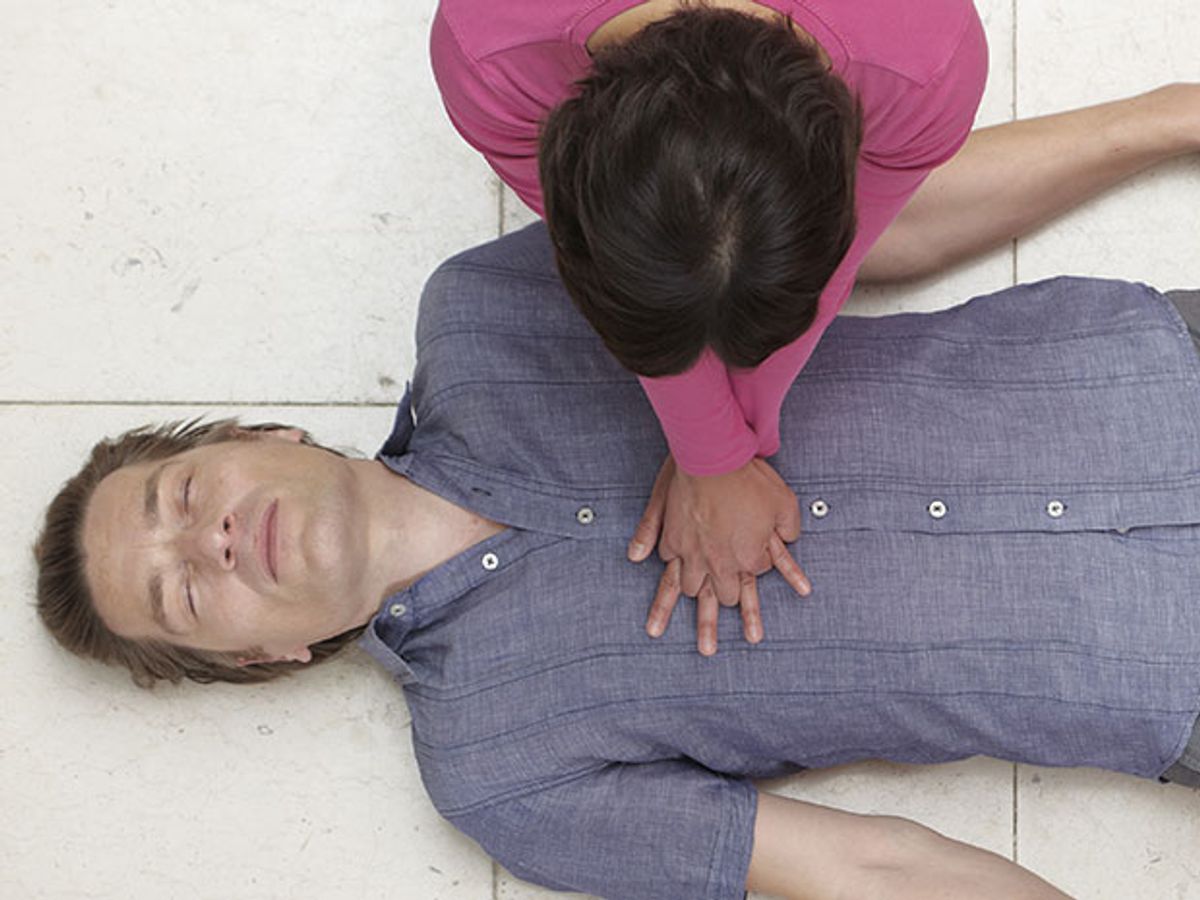Ordinary bystanders trying to perform lifesaving chest compressions on a cardiac arrest victims may soon have more guidance than just trying to remember the 1977 Bee Gees song “Stayin Alive.” Both smartphones and smart watches could provide useful feedback on the appropriate rhythm and depth of chest compressions. But a new study finds that smart watches may have the advantage in helping Good Samaritans accurately perform the first aid technique.
The widespread ownership of smartphones and smart watches means such commercial devices—paired with first aid apps—could be readily available for anyone performing cardiopulmonary resuscitation (CPR) during an emergency. Many smartphone apps already exist for the purpose of training people to perform CPR while holding the phone between their hands. Yet the rise of smart watches may provide an even better, hands-free device for providing CPR guidance. A South Korean study comparing the devices found that the smart watch wearers outperformed the smartphone users in delivering accurate CPR.
“As far as I know, we are the first team which has implemented a CPR feedback app in a smart watch,” says Youngjoon Chee, a biomedical and electronics engineer at the University of Ulsan in South Korea. “So we are the first team to compare the accuracy of chest compression depths.”
Such readily-available devices could make a big difference in boosting the low survival rates for cardiac arrest victims outside of hospitals. A 2015 Institute of Medicine report pointed out that less than six percent of people survive the 395,000 annual cases of cardiac arrest that occur outside hospital settings in the United States.
The new South Korean study recruited 10 healthcare workers or trained medical students at Hanyang University Hospital in Seoul to perform CPR on a sensor-fitted dummy with the guidance of either a smartphone or smart watch. Results were detailed in the 2016 Mar 19 issue of the journal Resuscitation.
Chee and his colleagues had previously developed a special CPR guidance algorithm for both Android-based smartphones and smart watches. The algorithm provides rhythmic feedback for keeping the CPR “beat” through either vibrations or metronome sounds. It also provides visual color feedback on the smartphone or smart watch screens to show whether the chest compressions are too deep (blue), too shallow (red) or just right (green). The best CPR typically includes chest compression depths of 5 to 6 centimeters for adults and a chest compression rate of 100 to 120 compressions per minute.

The study participants used both smartphones and smart watches while performing CPR on a dummy with a target depth of either 35 millimeters or 55 millimeters. In the end, the smart watch feedback enabled more accurate CPR with an average error of just 3.4 and 2.1 millimeters for the two target depths. By comparison, the smartphone feedback had an average error of 5.3 and 2.3 millimeters for the target depths.
That difference did not come as a surprise for the South Korean team. Using a smartphone requires the user to awkwardly place the smartphone between their two hands as they push down on the victim’s chest. A smart watch worn on the wrist enables a normal CPR position for both hands. That potentially makes smart watches the more promising candidate for future CPR assistance, even if far more people own smartphones than smart watches.
“I thought that if everybody is wearing smart watch, the accelerometer (sensor) is already built into the wrist,” Chee explains. “It can be used to increase the possibility of saving the people.”
Specialized medical devices that provide CPR feedback have already proven useful for hospitals and paramedics. Such dedicated devices have been certified by government regulators and proven medically helpful in clinical trials. But such devices typically are not available to anyone aside from trained medical experts.
By comparison, CPR apps for smartphones and smart watches promise to put similarly helpful tools in the hands—or on the wrist—of anyone who has experienced at least some prior CPR training. Such apps may not necessarily help completely untrained individuals, Chee says. But they could prove most handy for helping trained individuals perform the highest quality CPR before the paramedics arrive. The app developed by the South Korean team can be started within just 3 seconds if the person has used the app before.
This small, 10-person study represents just a preliminary step toward much larger clinical trials involving actual human patients. Chee’s team is working with Jaehoon Oh, a physician and emergency medicine researcher at Hanyang University, on multi-hospital clinical trials in South Korea.
Smartphones and smart watches will also have to pass the scrutiny of government regulators before they can transform into lifesaving medical devices. Most existing smartphone CPR apps market themselves as training tools rather than direct CPR guidance tools to avoid the most stringent medical device regulations, Chee points out. He hopes that the U.S. Food and Drug Administration (FDA) and other government agencies might consider a more flexible approach to approving mobile apps designed for emergency medical care.
So you never know. The future of emergency CPR for heart attack patients could still mean smart watches and defibrillator drones coming to the rescue.
Jeremy Hsu has been working as a science and technology journalist in New York City since 2008. He has written on subjects as diverse as supercomputing and wearable electronics for IEEE Spectrum. When he’s not trying to wrap his head around the latest quantum computing news for Spectrum, he also contributes to a variety of publications such as Scientific American, Discover, Popular Science, and others. He is a graduate of New York University’s Science, Health & Environmental Reporting Program.



